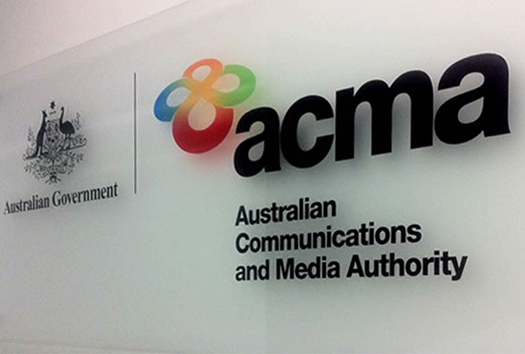The ACMA has released the outcome of its consultation on proposed deeming principles for regional radio licence areas.
In June 2020, the ACMA consulted on adopting a set of principles to guide deeming powers for community radio licence areas in regional Australia when considering the introduction of digital radio into regional areas.
The reason the issue was raised is that community radio broadcasting licensees need access to digital multiplex capacity to transmit digital services under the current legislation for digital radio. The ACMA proposed to adopt a set of principles to guide the ACMA’s deeming powers for community radio licence areas in regional Australia.
After considering submissions, ACMA’s analysis showed that with the relevant regional markets there are case-specific considerations they need to assess when deciding whether a community licence area will be deemed under subsection 8AD(3) of the Broadcasting Services Act.
Therefore, ACMA has decided not to adopt any principles at this time.
The CBAA and CRA both proposed more flexibility rather than a binding principle of deeming for such licences, but for different reasons.
The Community Broadcasting Association said, in its submission to the ACMA:
There should be flexibility and judgement available to the ACMA to exercise in deeming decisions, and it is clear that the ACMA should generally take steps that enhance the diversity of services available to listeners.
There is a complex set of intersecting considerations for deeming, and, as the regulator, the ACMA has full agency to reach appropriate decisions. The principles set out considerations that are in alignment with the policy intentions expressed in the BSA and RA.
The business model and market-based factors that underpin commercial broadcasting are not inherently relevant to the primary considerations of optimising a diversity of community services available and relevant to the community.
The reservation of multiplex capacity is set aside specifically for community broadcasting in legislation. The clear policy intention of that legislation is that how the reserved capacity is utilised should firmly sit in the domain of the ACMA as regulator, and commercial broadcasters should not have any sense of veto or undue influence.
Commercial Radio Australia, which objected to the ACMA’s decision to deem community stations part of the Hobart-wide digital radio transmisison area, said in its submission:
CRA’s view is that the Hobart Determination was flawed and the reasoning behind it should not underpin the Deeming Principles. Even if the ACMA does not agree that the Hobart Determination was flawed, CRA asks the ACMA to accept that it was an unusual decision and should not be used to underpin principles that can be applied to a broad range of circumstances.
There are 3 reasons for this:
first, the Hobart Determination departs significantly from past decisions by the ACMA (see above);
second, the Hobart Determination does not align with the legislative intent of the enabling provision; and
third, the ACMA’s choice of a 30% threshold when evaluating whether the degree of population overlap between the radio licence areas warrants a deeming decision imports policy considerations that should not be applied more generally. A 30% threshold appears arbitrary and unjustified.
CRA also said the Hobart Determination “did not align with Parliamentary intent” and that the 30% threshold was arbitrary and unjustifiedThe full submissions can be read here.
Briefly the principles outlined by the ACMA in June last year were as follows:
Principle one: spare capacity on the multiplex
The ACMA considers it appropriate to have an upper limit on the number of services that could have access to the two-ninth community capacity reservation (which equates to 256 kbit/s total available bit rate) to avoid diminution of the quality of the services.
Five community licences is proposed as the upper limit, while four is seen as optimal, with each service being able to access approximately 64 kbit/s, thougth his upper limit would also depend on the number of incumbent community services eligible to operate in some licence areas.
Principle two: significant correlation between commercial and community licence area populations
This correlation may include the extent of the population overlap, the extent of the geographic overlap and coverage of major population centres.
In assessing population overlap, the ACMA would look at the
Principle three: relevance of community interest to the community of the commercial licence area
A community radio licence area may be deemed if the licensee may be able to serve a different, perhaps larger audience, in digital mode in addition to that which it is authorised to provide under its analog service.
These principles will no longer be adopted automatically in future when reviewing regional licence areas in relation to digital radio.
Subscribe to the radioinfo podcast on these platforms: Acast, Apple iTunes Podcasts, Podtail, Spotify, Google Podcasts, TuneIn, or wherever you get your podcasts.
- The extent to which the commercial licence area overlaps with the community licence area
- The extent to which the community area overlaps with the commercial licence area





“The ACMA decisions seems to ignore the technical characteristics of broadcast systems.
1. In capital cities there are two types of community broadcasts. One covers the whole city and the other covers a number of suburbs and is usually parochial to that area.
2. DAB+ in Australia is broadcast from the most powerful DAB+ transmitters in the world, with the transmitting antenna high on TV transmitting towers. This means that the coverage is designed to cover all of each capital city. The fact that it is a multiplex means that the coverage area of commercial and community broadcasters must be identical from each transmitter.
3. The UK has small scale DAB broadcasting, which is not suitable here because there are only 8 DAB+ transmission channels available in the populated parts of Australia. The rest of the channels are used by TV, which is not the case in the UK. This means that additional DAB+ channels are not available if DAB+ is to be used in areas surround our capital cities.
4. A better option for community broadcasting and for all regional broadcasting is to use DRM on the now vacant TV channels 0, 1 and 2. There are 206 DRM transmission channels available. Each transmission channel can carry up to 3 broadcasts. Since there are so many channels available it means that the transmitter can be located in the middle of each audience, requiring much less power and therefore transmission costs.